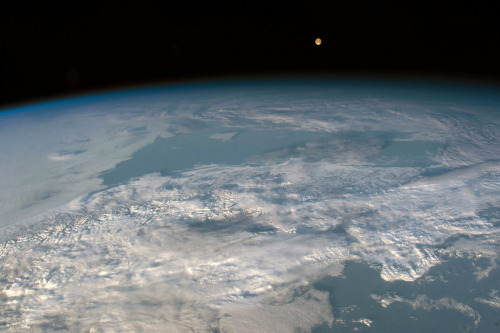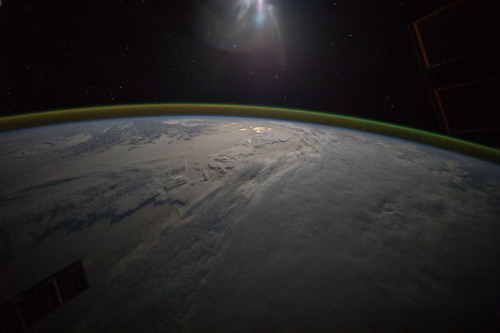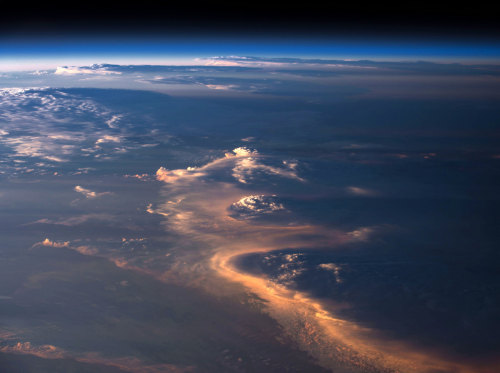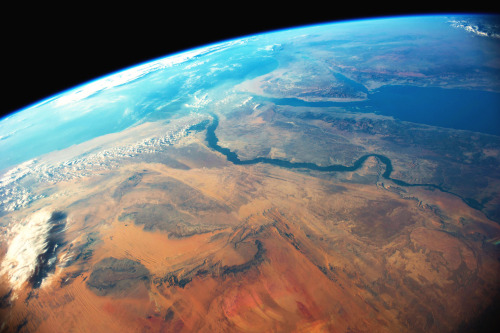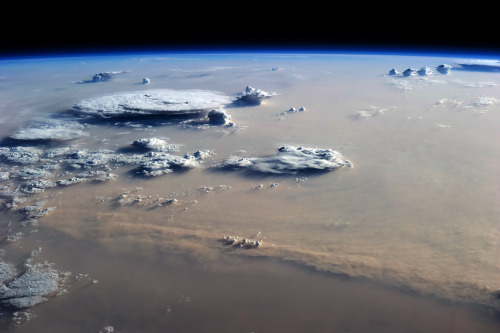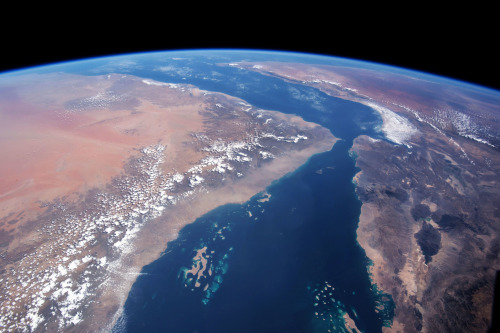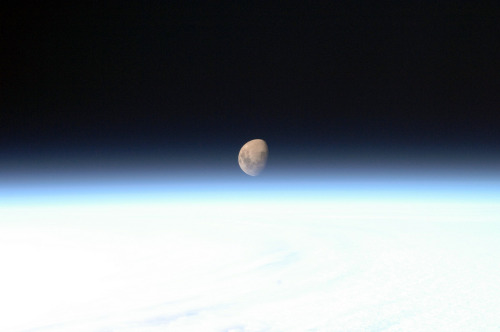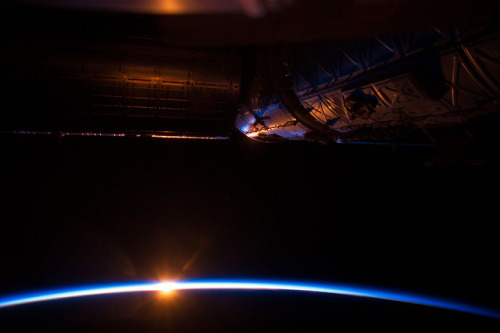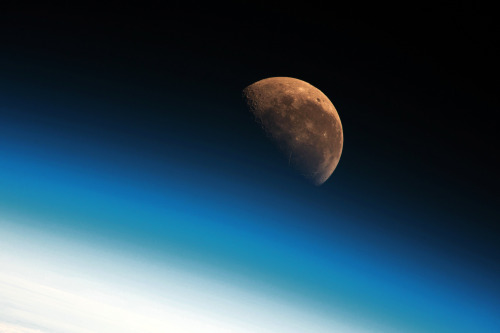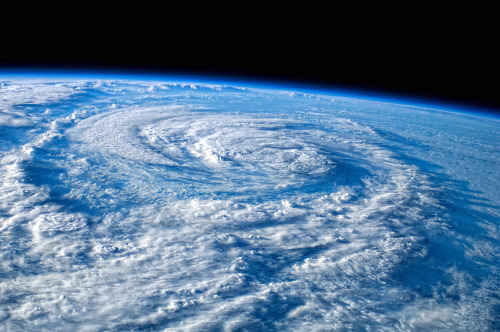“NEW GALAXY DISCOVERED ORBITING THE MILKY WAY” You Would Think That Scientists Would Have Already




“NEW GALAXY DISCOVERED ORBITING THE MILKY WAY” You would think that scientists would have already discovered most of the galaxies around the Milky Way, but that does not seem to be the case. Astronomers have recently detected a dwarf galaxy orbiting the Milky Way called the Crater 2 dwarf. This galaxy was discovered through measuring its ‘half-light diameter’. Since galaxies don’t have actual definitive edges, astronomers measure galaxies by looking at the brightest part of the galaxy where half of the total amount of light from the it is emitted - half-light diameter. This galaxy has a half-light diameter of 7000 light years, which would look twice as big as the full moon if we could see it with the naked eye. Gabriel Torrealba and his colleagues at the University of Cambridge, the team that discovered this galaxy, was only able to find it by using a computer that looked for over-densities of stars in data (hinting at the possibilities of galaxies or something else) from images taken by a telescope in Chile. The galaxy has eluded the detection of the scientific community for so long only because its stars are spread out so thinly, giving it a ghost-like appearance. In addition, this dwarf galaxy is near four other new-found objects: the Crater globular star cluster as well as three dwarf galaxies in Leo - a group of objects that is now falling towards the Milky Way. Interestingly, this galaxy is quite new due to it retaining a round shape suggesting that it had never encountered a giant galaxy, otherwise gravity would have bent the dwarf out of shape.
Read more about this fascinating story on: https://www.newscientist.com/article/2084438-never-before-seen-galaxy-spotted-orbiting-the-milky-way/
More Posts from Study-astronomy-biology-ref and Others









On October 8 a privileged few could see auroras in abnormally low latitudes, as the spectacular pictures above taken in Wales and Northern England.
Via TON: Northern Lights Put On Spectacular Show As Aurora Borealis Lit Skies Over Wales And Yorkshire.

Infographic about Planet 9, the required planet to explain the trajectory of six of the most distand known Kuiper Belt Objects.
Source: http://imgur.com/S5faizX
MBTI Studying Tips - Part 1
DISCLAIMERS:
What I did do: Collect information and organize them into an easy-to-read-and-understand-post. What I didn’t do: Write most of it. Most of the information here isn’t my own writing, but rather useful tips I found from various sources. Credit is given at the bottom of the post.
I wrote most of this by doing a hell lot of research online and trying to ask my friends of different types irl what they thought of it. I am no professional, and my words in no way should be taken as gospel. Please, please send me corrections or your thoughts if anything I wrote was inaccurate, I will appreciate all the feedback I can get.
Hello hello! Your old friend Skye is here with some tips for studying based on your MBTI personality type. Now before we jump straight into things, let’s answer a few basic questions:
What is MBTI?
MBTI stands for the Myers-Briggs Type Indicator, which is basically a personality test that classifies you into one of 16 different personality categories based on a four-letter code. This is what the “INFP” or “ESFJ” codes mean if you’ve been seeing them around in the community. The test assesses you on four of your main traits:
How do you prefer to direct your energy? (I vs E)
What kind of information do you prefer to gather? (S vs N)
What criteria do you prefer for making decisions? (T vs F)
What kind of environment do you prefer? (J vs P)
So how do I find out what’s my type?
You can take a free online quiz here!
Okay, but what’s with the ‘Introverted Thinking’ and ‘Fi’ and all the fancy terms?
You can read more about Cognitive Function Theory here! I will be basing my post off this theory because I think it’s a more comprehensive method of understanding MBTI.
Onwards! (The rest is under the cut bc skye rambled and it’s long af even tho I’m just covering the introverted functions)
Keep reading

The Earth from Russia’s Elektro-L satellite
This image compilation, comprised of images taken by the Russian Elektro-L weather satellite, was taken from a geostationary orbit at a distance of 36,000 km. It shows the changing illumination of Earth as it rotated on the autumnal equinox and illustrate the concept of a geostationary orbit. At this height, the satellite is orbiting at fast as the earth is spinning and stays in the same location relative to the surface of earth.
Credit: Vitaliy Egorov
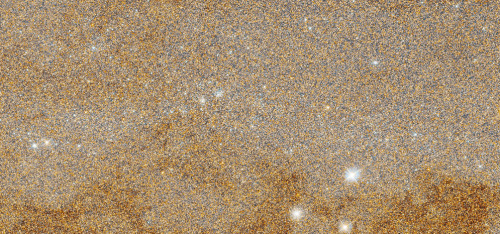
A shot of just a tiny bit of the Andromeda Galaxy, from the sharpest ever view taken by the Hubble Space Telescope
Full size image

Underwater explosions are incredibly dangerous and destructive, and this animation shows you why. What you see here are three balloons, each half-filled with water and half with air. A small explosive has been set off next to them in a pool. In air, the immense energy of an explosion actually doesn’t propagate all that far because much of it gets expended in compressing the air. Water, on the other hand, is incompressible, so that explosive energy just keeps propagating. For squishy, partially air-filled things like us humans or these balloons, that explosion’s force transmits into us with nearly its full effect, causing expansion and contraction of anything compressible inside us as our interior and exterior pressures try to equalize. The results can be devastating. To see the equivalent experiment in air, check out Mark Rober’s full video on how to survive a grenade blast. (Image credit: M. Rober, source)
-
 chastedijit liked this · 5 years ago
chastedijit liked this · 5 years ago -
 j70mega777 reblogged this · 7 years ago
j70mega777 reblogged this · 7 years ago -
 j70mega777 reblogged this · 8 years ago
j70mega777 reblogged this · 8 years ago -
 j70mega777 liked this · 8 years ago
j70mega777 liked this · 8 years ago -
 lord13death liked this · 8 years ago
lord13death liked this · 8 years ago -
 unaimagen liked this · 8 years ago
unaimagen liked this · 8 years ago -
 421druglife reblogged this · 9 years ago
421druglife reblogged this · 9 years ago -
 peet-ahh-box reblogged this · 9 years ago
peet-ahh-box reblogged this · 9 years ago -
 micsims reblogged this · 9 years ago
micsims reblogged this · 9 years ago -
 peet-ahh-box reblogged this · 9 years ago
peet-ahh-box reblogged this · 9 years ago -
 snafupickles liked this · 9 years ago
snafupickles liked this · 9 years ago -
 freshcherriesinthesnow liked this · 9 years ago
freshcherriesinthesnow liked this · 9 years ago -
 beingforthebenefitofmsjamz reblogged this · 9 years ago
beingforthebenefitofmsjamz reblogged this · 9 years ago -
 one-celestial-being reblogged this · 9 years ago
one-celestial-being reblogged this · 9 years ago -
 one-celestial-being liked this · 9 years ago
one-celestial-being liked this · 9 years ago -
 coldshaftsofbrokenglass liked this · 9 years ago
coldshaftsofbrokenglass liked this · 9 years ago -
 siriuslydandy reblogged this · 9 years ago
siriuslydandy reblogged this · 9 years ago -
 enchanted-spark liked this · 9 years ago
enchanted-spark liked this · 9 years ago -
 imsorryjoyboy reblogged this · 9 years ago
imsorryjoyboy reblogged this · 9 years ago -
 peet-ahh-box reblogged this · 9 years ago
peet-ahh-box reblogged this · 9 years ago -
 auroracudia liked this · 9 years ago
auroracudia liked this · 9 years ago -
 jonathan-bontrager-blog liked this · 9 years ago
jonathan-bontrager-blog liked this · 9 years ago -
 study-astronomy-biology-ref reblogged this · 9 years ago
study-astronomy-biology-ref reblogged this · 9 years ago -
 hayle--storm-blog liked this · 9 years ago
hayle--storm-blog liked this · 9 years ago -
 jdr1966 liked this · 9 years ago
jdr1966 liked this · 9 years ago -
 psychosalad liked this · 9 years ago
psychosalad liked this · 9 years ago -
 abstract-moonman reblogged this · 9 years ago
abstract-moonman reblogged this · 9 years ago -
 abstract-moonman liked this · 9 years ago
abstract-moonman liked this · 9 years ago -
 hellorandomaccount reblogged this · 9 years ago
hellorandomaccount reblogged this · 9 years ago -
 hellorandomaccount liked this · 9 years ago
hellorandomaccount liked this · 9 years ago -
 rwbwby liked this · 9 years ago
rwbwby liked this · 9 years ago -
 cherrymissunicorn-blog liked this · 9 years ago
cherrymissunicorn-blog liked this · 9 years ago -
 gatojuan08 liked this · 9 years ago
gatojuan08 liked this · 9 years ago -
 cry-smile-forever liked this · 9 years ago
cry-smile-forever liked this · 9 years ago -
 imsorryjoyboy liked this · 9 years ago
imsorryjoyboy liked this · 9 years ago -
 transposed-rodent liked this · 9 years ago
transposed-rodent liked this · 9 years ago -
 jaysun liked this · 9 years ago
jaysun liked this · 9 years ago -
 jaysun reblogged this · 9 years ago
jaysun reblogged this · 9 years ago -
 thenoahnetwork liked this · 9 years ago
thenoahnetwork liked this · 9 years ago

This is a studyblr for everyone have some passion for science, especially astronomy and biology
129 posts
